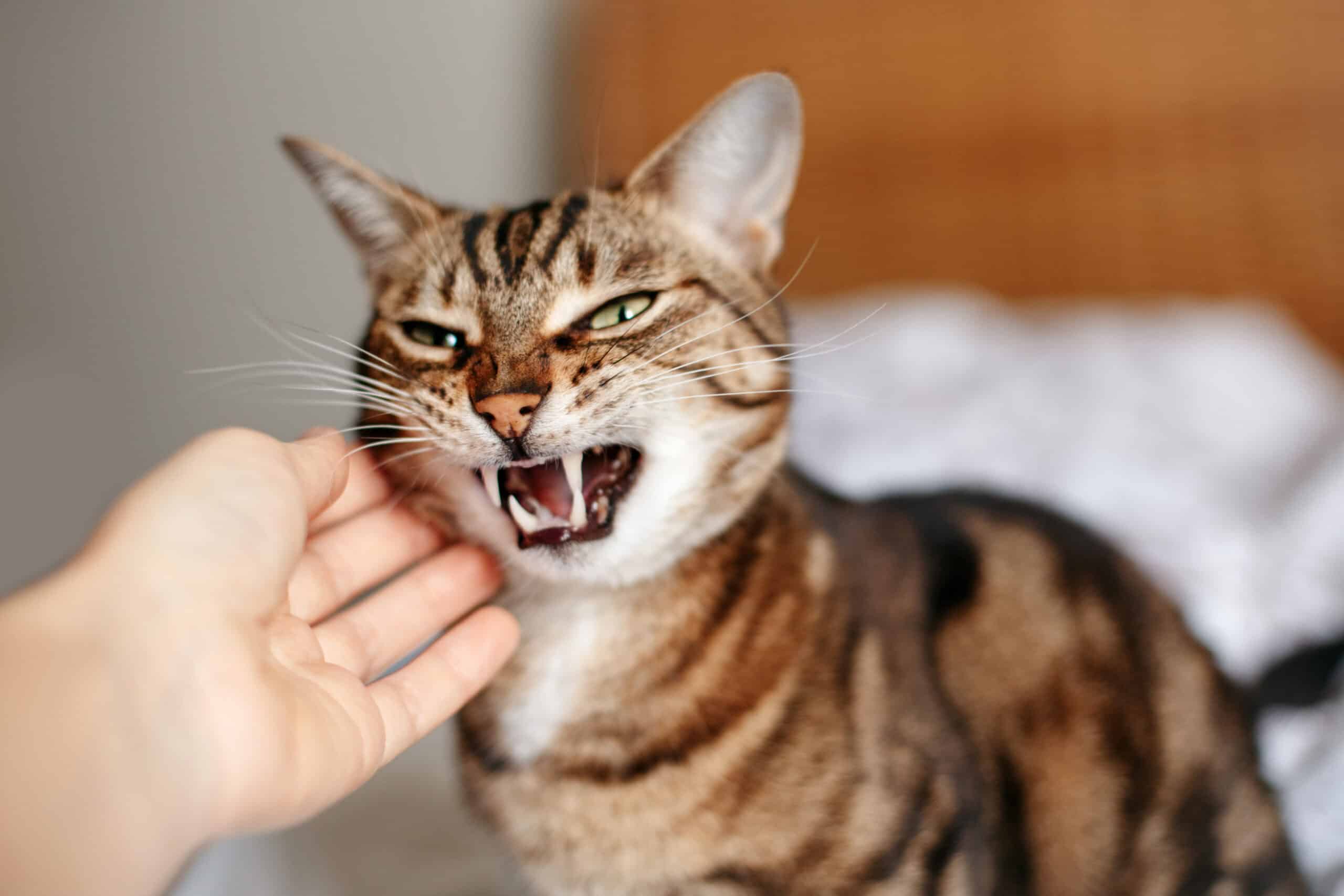Aggression is a common behavioral problem in cats. In fact, 27% of pet owners surrendering their cats to shelters for behavioral reasons list aggression as the main issue.
Not only does feline aggression put your cat at risk, it could also lead to someone else in your home being harmed. In order to solve the problem, you must first pinpoint the triggers for your cat’s aggression.
Medical Aggression vs. Behavioral Aggression
The first step is to determine whether the aggression is a medical problem or a behavioral one. Could your kitty be painful or fearful? Perhaps she is territorial or doesn’t like to be petted a certain way?
A visit to your veterinarian will help rule out potential aggression-causing conditions such as hyperthyroidism, osteoarthritis, dental disease, and problems affecting the central nervous system. If the physical examination and tests are clear, the issue is probably behavioral.
Types of Feline Aggression:
Pain-Induced Aggression
Cats with osteoarthritis or other painful conditions may use aggression as a way to protect themselves from unwanted physical contact. If you suspect this is the case with your kitty, avoid touching her in tender areas such as the spine or joints and consult with your veterinarian.
Fear Aggression
Since anxiety is a medical condition, fear-induced aggression also falls into this category. Cats may react fearfully when encountering an unfamiliar person, pet, or place. Loud noises and strange smells may also lead to fear-induced aggression.
Play Aggression
When a kitten misses out on early play experience with her littermates it often leads to play aggression. These cats never learn how hard to bite or how much is too much when it comes to play. As a result, they may be too rough with other pets or humans in the home.
Petting-Induced Aggression
Some cats become irritated or overstimulated during petting and may nip or bite their handler. Luckily, they tend to give warning in the form of growling, tail lashing, and flat ears before striking. Bathing, grooming, and nail trimming can also lead to this type of feline aggression so use caution.
Referred Aggression
Cats love to gaze out the window at the world beyond, but this can lead to trouble. If something grabs her attention—like a bird or a stray cat—and she cannot get to it, your kitty may act out her frustration by attacking you, another member of your family, or another pet.
Status-Induced Aggression
Cats that block doors with their bodies or swat at other cats as they pass are attempting to establish social dominance through status-induced aggression. If your kitty behaves this way, the best course of action is to completely ignore her until she calms down.
Territorial Aggression
Cats often feel territorial of their home and yard which can lead to another kind of feline aggression. Most territorial cats reserve their aggression for animals that dare to enter their domain, but some may also go after unknown humans like the mail carrier. Additionally, territorial cats may attack cats that live in their home if they have been absent for a period of time such as an overnight stay at the vet.
Reproductive Aggression
Intact male cats (and less often females) tend to behave aggressively towards others of the same sex. This occurs at social maturity, around the age of two to four. Similarly, mama cats may become aggressive when their kittens are approached.
Fortunately, spaying and neutering your cat at the appropriate time will prevent these types of feline aggression.
Tips for Managing Feline Aggression
The following tips for managing feline aggression come from the Cornell Feline Health Center:
- Early intervention is best.
- Any type of physical punishment can increase a cat’s fear or anxiety and worsen aggression.
- Medications may help, but only in combination with behavioral and/or environmental modification.
- Startling an aggressive cat with noise rather than physical contact is usually effective.
- Avoid situations that you know make a cat aggressive.
- Separate cats that act aggressively toward each other and reintroduce them slowly with positive reinforcement.
- Food treats are excellent positive enforcers of non-aggressive behavior.
- Aggression that cannot be managed may require consultation with a veterinary behaviorist.






